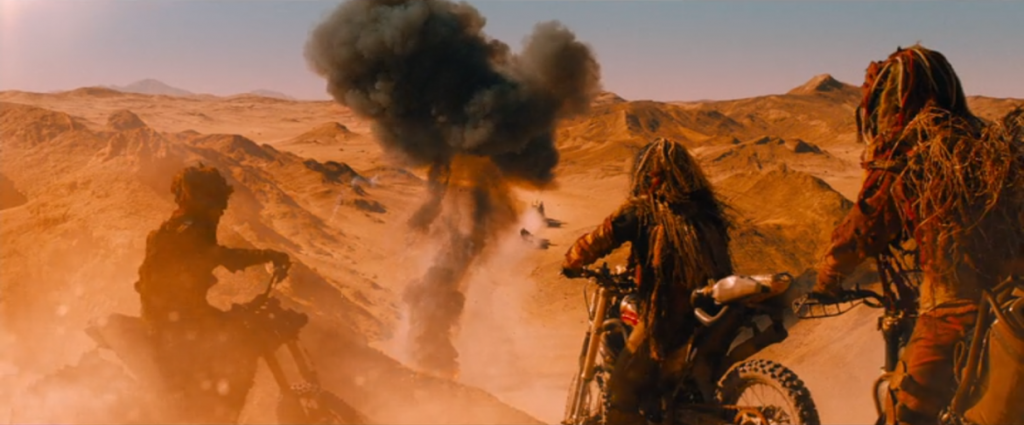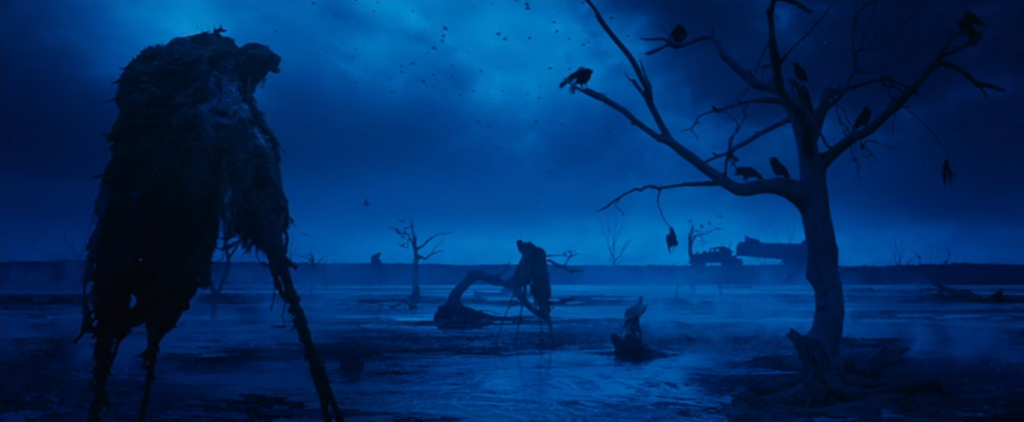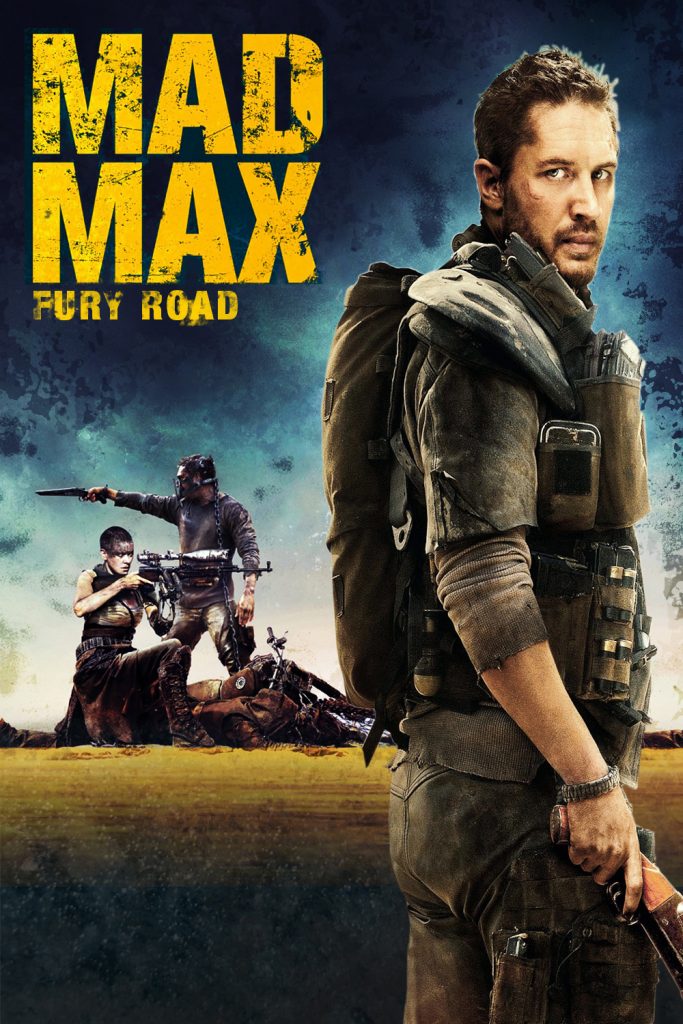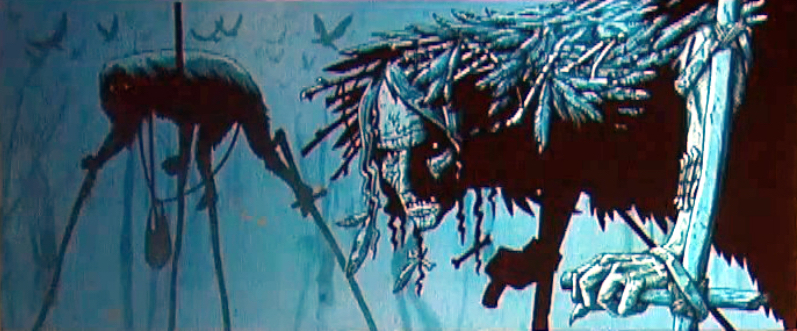Miller’s use of post-apocalyptic colour is deliberate and ground-breaking. Mad Max: Fury Road is saturated with reds and oranges. Immediately following a fight scene that results in a lead-character casualty, the colouring changes to a palette of deep blues and blacks. This immediately creates an association around the characters within of death; alongside the Crow Fishers’ costuming of skulls and feathers, this is symbolic of crows’ carrion status. This symbolism of a consciously blue and dreary colouring is meant to let the audience know that the crows and Crow Fishers are not positive characters; we are supposed to feel a cold sense of unease and desolation. The colouring reflects the Crow Fishers as living in a land uninhabited; mirroring the idea of crows being adaptable scavengers.
In the middle-ground of the shot, we are shown an actual murder of crows, perching on a dead tree. This enables a physical comparison between the Crow Fishers and their namesakes; balancing on stilts, the Crow Fishers’ posture is akin to that of the crows, whilst their bulky feathered suits reflect the crows’ bodies.
Miller later revealed that the Fishers are in fact forgotten members of the Vuvalini. This works as an opposition to the crows; Dr Kevin McGowan’s research into crows has shown each ‘murder’ to be based in family and multiple generations. [1] The abandonment of the Vuvalini members contrasts the familial bonds between the group of crows; a singular shot shows two species whose society is based in family, but one has been abandoned whilst the other remains together. Furthermore, the apparent solitariness of the Crow Fishers is odd; only three, far away from each other travelling in opposite directions, are shown in the shot. This distances the Crow Fishers from crows whilst simultaneously merging their characteristics, and advances the notion of them as inhuman; the Crow Fishers are both crow and human whilst simultaneously being neither. Despite appearing neutral and unimportant, the Crow Fishers’ association with crows presents them as innately untrustworthy.
We later learn that the swampland the Crow Fishers are seen in is in fact what is left of The Green Place, an area renowned for being safe, and lush; the Crow Fishers thus acting as a marker of crows being a sign of a bad omen.
Though initially the Crow Fishers appear to share nothing in common with crows, their namesake serves to give the audience symbolic connotations. The omen of impending doom and death that follows crows too follows the Crow Fishers; they shadow characteristics of negativity, adaptability, and alienation that would not be present had they been named after another bird. Their naming also serves to contrast symbolically the pre-Crow Fisher members of the Vuvalini; Miller consciously and ironically places a forsaken group of people alongside a group of birds that rely on unity. Though the movie perhaps fuels negative stereotypes about crows, their inclusion works to serve as a symbol for survival in even the harshest conditions, and their positioning alongside such a negative human decision of banishment shows that they are perhaps not as unfavourable a species as we are ourselves.
[1] Kevin McGowan, ‘To Know the Crow: Insights and Stories from Over a Quarter Century of Crow Study’, Pen State https://ebird.org/pa/news/kevin-mcgowan-tells-crow-tales-at-penn-state-on-april-4 [24 May 2018].



